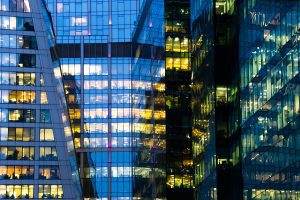This audio was created using Microsoft Azure Speech Services
Right about now many of us (in the Northern hemisphere) have returned from our summer vacations and are getting our children ready for a new year of learning. It’s a time when all of us, not just those in school, have that back-to-school feeling as we enter the autumn season.
As tempting as it can be to simply charge ahead with the next project, it’s good to take stock of what we’ve learned so far and revisit fundamental principles, just as our educators do with the kids at the beginning of a new school year.
Within Schneider Electric’s Smart Cities business, the touchstone of our foundational approach is found in the white paper “The Smart City Cornerstone: Urban Efficiency”. By continually revisiting this text, we anchor each customer project to well-proven principles that help us to work collaboratively to achieve successful outcomes.
In over 250 completed smart city projects around the globe we’ve sought to apply these same bottom-up building blocks:
- Set the vision and roadmap for an efficient, liveable and sustainable city
- Combine best-in-class hardware and software to improve operating systems
- Harness big data integration for wider city operational and informational efficiency
- Add innovation to make a holistic and sustainable future a reality
- Drive collaboration between the most well-suited global and local players, as well as across the entire smarty city value chain
Regardless of which aspect of its infrastructure a city chooses to start with, these principles can help ensure that the journey towards a smart future is mindful and holistic at each step.
We’ve applied this data-driven approach to help cities of many sizes across a range of key municipal departments, as outlined in the graphic below. Often, a city will choose the most pressing infrastructure issue to begin with, subsequently widening the scope of projects over time to incorporate more aspects of citizen priorities. How these decisions are made can be shaped by many factors such as staffing, resource constraints, infrastructure issues or the challenges of funding.

An interesting example of a city that chose to make big changes over a large cross-section of infrastructure is that of Carson City Nevada’s Public Works Department, which worked with Schneider Electric’s Invensys subsidiary and Ecosystem partner, Wonderware PacWest to deliver a major solution encompassing water, waste water, transportation, landfill, fleet and renewable power.
With a population of less than 60,000, the challenges to Carson City of doing more with less are exactly the same as those of much larger cities; such as increasing efficiency, reducing waste, and improving the utilisation and distribution of resources.
Also like some of the world’s most progressive cities, Carson City is blessed with administrators and public servants who are committed to ensuring their city is providing the best possible service for its citizens. The city’s Public Works department delivered an end result that reduced operational staff hours by 15% while integrating cross-functional management capabilities; a huge success for any city in the world.
Whether your city is ready for a city-wide project or simply starting one department at a time, focusing on the fundamental principles when beginning a smart city journey will dramatically increase your chances of a successful and transformational outcome. So dust off those school books (er, white papers) – you’ll be glad you did.
Not much of a white paper person? Visit our Smart Cities solutions web page.




Conversation
Vietvinh Nguyen
9 years ago
Smart city sounds wonderful for me. As I can imagine that living in a ‘smart’ city that helps us managing the energy resource; instantly accessing to public information, shopping, transportation, weather, services, etc. There is no distinguish between ‘at home’ and ‘going out’ since we can control and supervise our home scheduled utilities right on the street or in a cafe with our smart phones or wall mounted HMI touch panels.
Everything seems fine until we have finally to face with technical problems. There is no question that many benefits a smart city provides us. It saves our time from trivial things but it requires a maintenance service to ensure the entire system working smoothly. It frequently requires new smart devices to replace the old failure ones, and, finally it requires a security measure to prevent the hackers from taking control of the entire smart city.
However, it would be great if I could take part in the projects to make our world smarter and smarter.
Tapleigh Niethamer
9 years ago
Thank you for your reply Vietvinh. Without a doubt there are challenges that come along with a smart city vision and technology certainly is not error/maintenance-free. A city must balance the pros of realizing their vision of being “smart” with the growing pains that come along with this. The best we can do is set a vision, a strategy to identify these potential shortcomings and have a response ready. A resilient city IS a smart city.